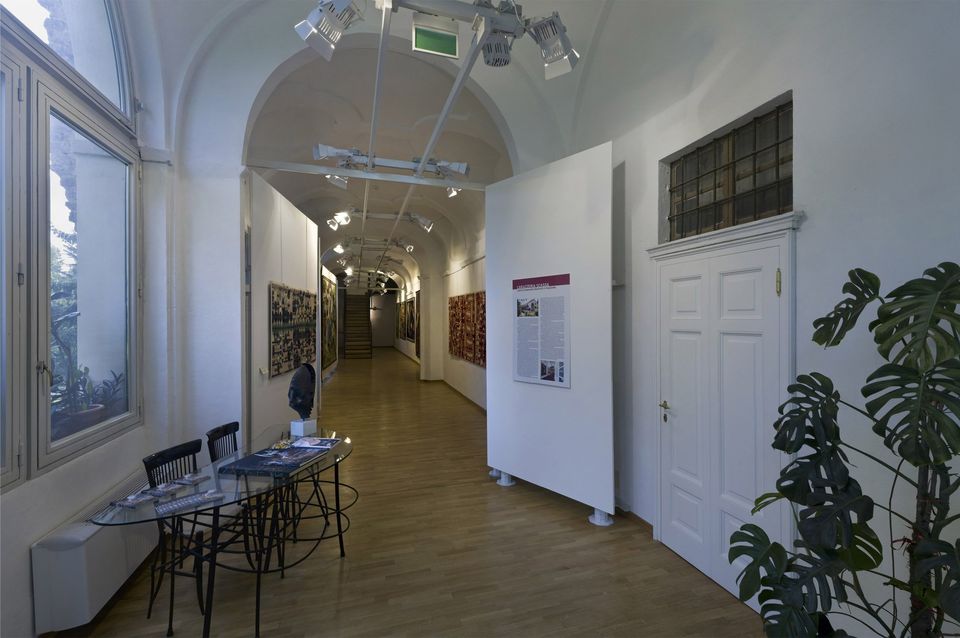Visitors
Since the 1960s, Arazzeria Scassa has been producing tapestries in wool of the highest quality, with an exclusive high-heddle technique, which allows the creation of shadows and details unthinkable with any other technique.
Each Scassa tapestry is handmade thanks to the skilful work of the master weavers, including the members of the Scassa family, who for two generations have preserved and handed down the artisan know-how and culture of the tapestry. Hours, months, years of work are transformed into works of the highest artistic value, exhibited in the largest museums in the world, in the rooms of the Quirinale and in the personal quarters of His Holiness, as well as in the residences of the private clients of the Arazzeria Scassa. It is thanks to the investment and sensitivity of the clients that the Tapestry has been thriving for over half a century as a spokesperson for an artistic excellence that speaks to the world from Asti.
Some technical data
Cardboard is a drawn sketch, depicting the main lines of the work that will be created.
Hachure, or hatching, is a technique already known in the Middle Ages, used for example for the tapestry of the Apocalypse of Angers and in the twentieth century by the French artist Jean Lurçat. It consists of inserting two colors with a comb or scaling, to obtain a nuance.
Heald, each of the ring cords to which, in the vertical frame (called high heald precisely because the healds are at the top) and in the horizontal one (called low heddle because the healds are precisely at the bottom) are linked in groups of 12 the warp threads, in order to keep the even threads separate from the odd ones.
Restoration, it can be conservative and integrative. In the tapestry industry, conservative restoration tends to safeguard the fabric, preserving it from subsequent damage. The integrative restoration, on the other hand, provides for the insertion of fabrics, patches or stitching.
The Arazzeria Scassa has restored over time some modern tapestries and a Bronzino tapestry from 1549, kept inside the Quirinal palace. The restoration procedures can include several steps at several levels, from reupholstery, cleaning and washing, up to the reconstruction of the weave itself, integrating the missing parts.




